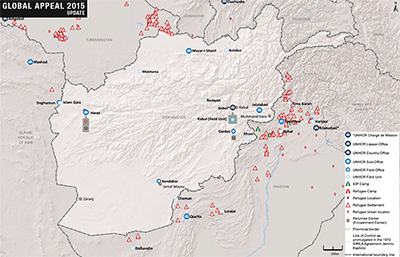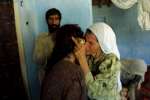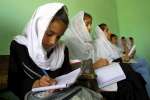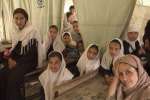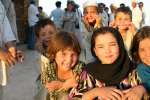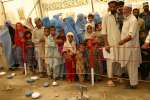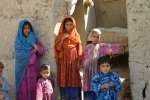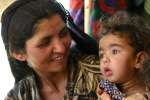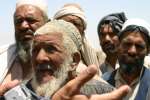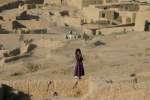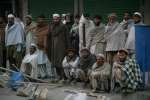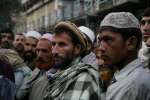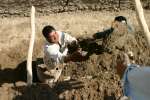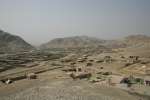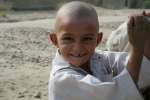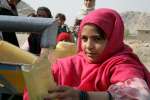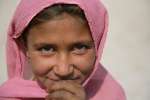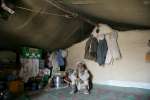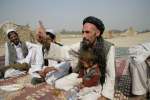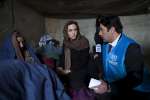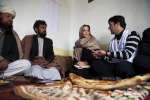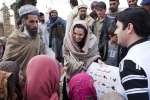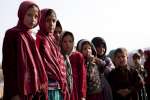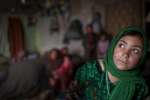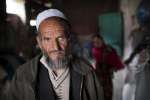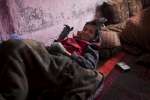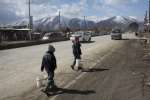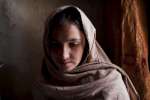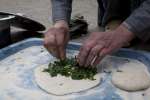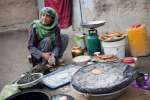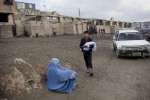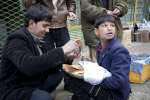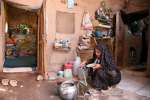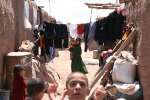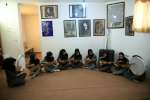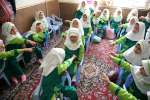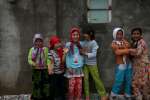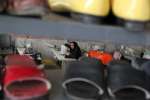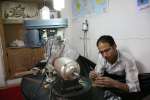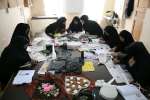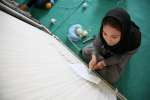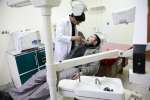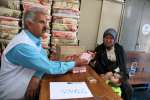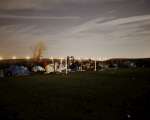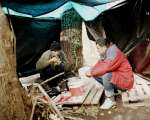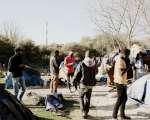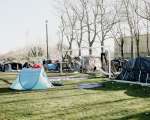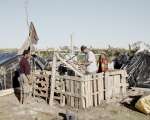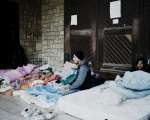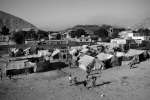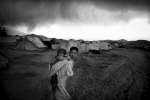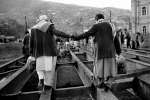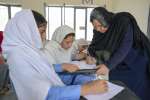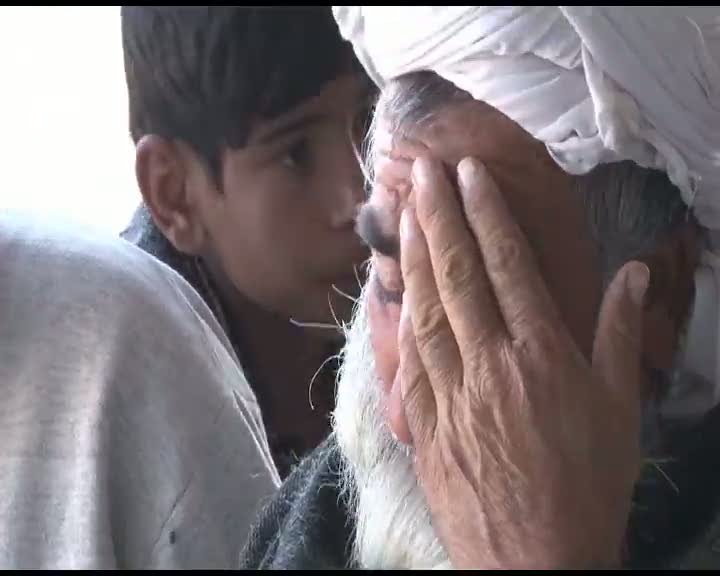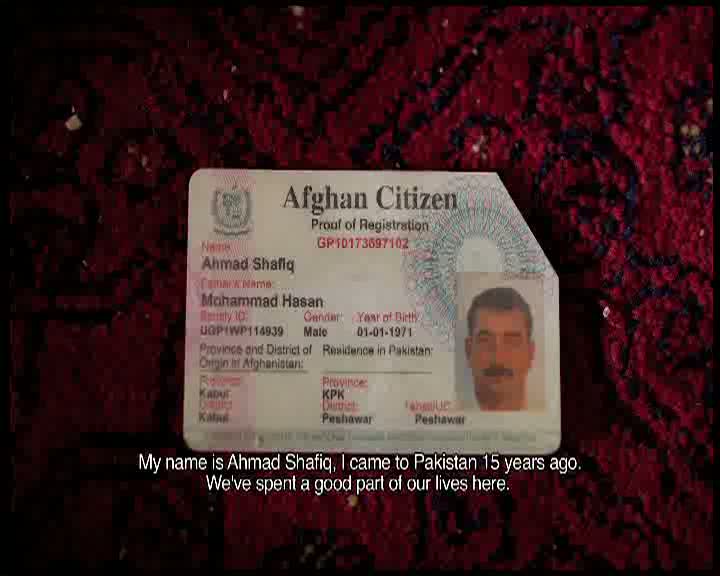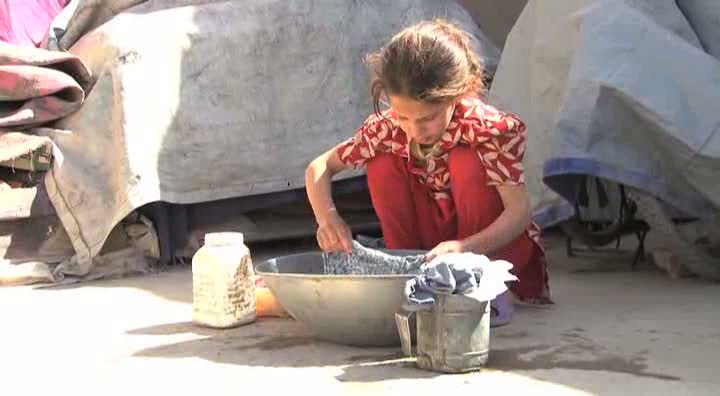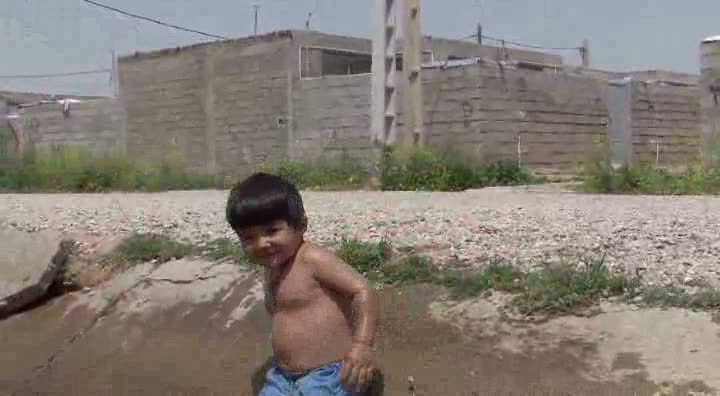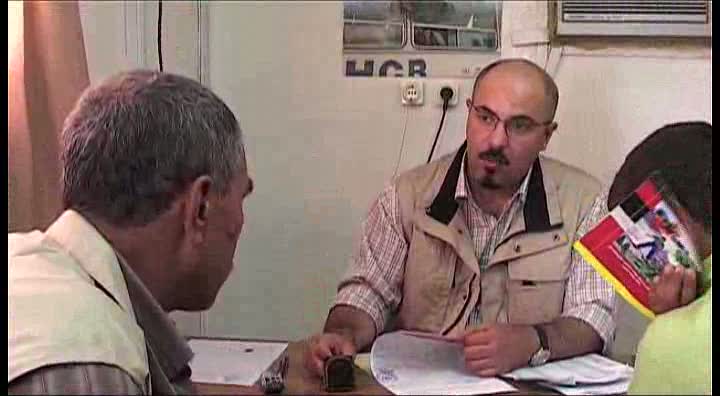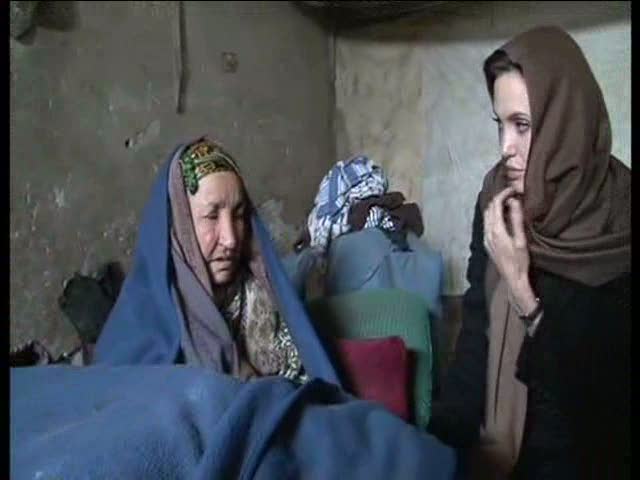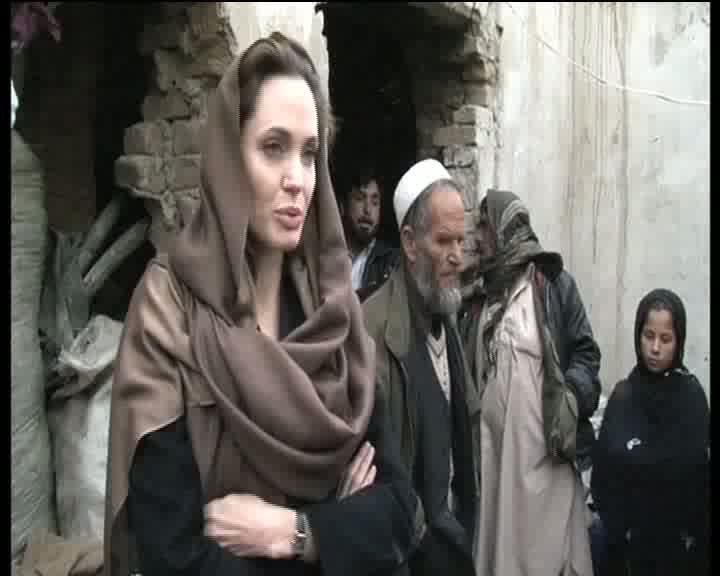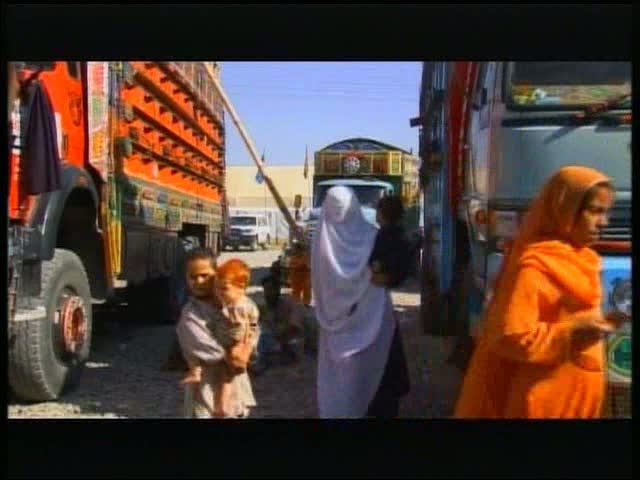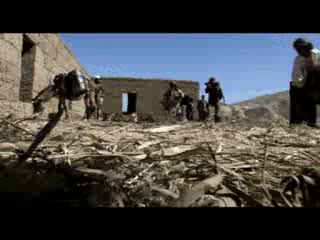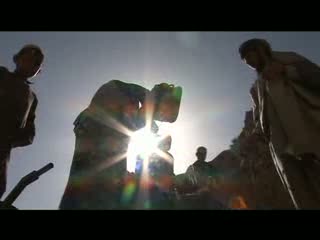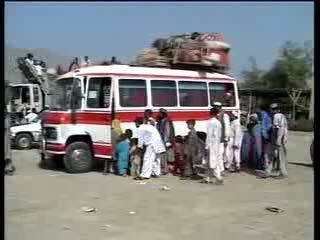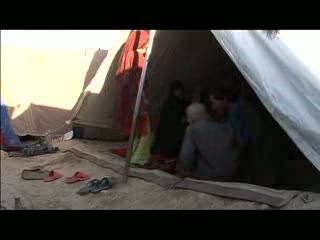Home > Where We Work > Asia and the Pacific > South-West Asia > Afghanistan
2015 UNHCR country operations profile - Afghanistan
| Overview |
Working environment
-
It is anticipated that the newly-formed national unity Government will demonstrate commitment to creating an enabling environment for sustainable returns. The withdrawal of international security forces, as well as a complex economic transition are, however, likely to affect peace, security and development in Afghanistan. Humanitarian needs are not expected to diminish in 2015. Support and assistance from the international community will be essential to ensure a transition towards more stable development.
-
The Solutions Strategy for Afghan Refugees (SSAR) remains the main policy framework for sustainable reintegration of those returning to Afghanistan. The National Steering Committee established in 2014 aims to facilitate the implementation and monitoring of the SSAR's initiatives.
-
Many returnees have migrated to towns and cities, contributing to the country's rapid urbanization. As rising poverty and unemployment in urban centres prevent them from reintegrating into society, many will need basic assistance.
-
Currently, there is no national asylum and refugee legislation in Afghanistan, so UNHCR is conducting refugee status determination (RSD). A draft national refugee and asylum law, prepared with UNHCR assistance, is awaiting inclusion in the 2015 legislation agenda.
-
The Government of Afghanistan respects the principle of non-refoulement and host communities have provided generous support; however, refugees face protection concerns related to the volatile security situation, and difficulties in accessing basic services.
-
Insurgency continues to spread from southern Afghanistan to large areas of the north and centre and is likely to remain a threat to stability in 2015. While violence may displace more people, insecurity is likely to continue restricting humanitarian access. Economic insecurity and the Government's limited capacity to provide basic services are also challenges.
People of concern
Since 2002, more than 5.8 million Afghan refugees have returned home, 4.7 million of whom were assisted by UNHCR. Representing 20 per cent of Afghanistan's population, returnees remain a key population of concern to UNHCR. Refugee returns have dwindled during the past five years and owing to insecurity and a difficult socio-economic situation, only around 10,000 refugees returned during the first seven months of 2014.
In June 2014, following military operations in North Waziristan Agency, Pakistan, more than 13,000 families (some 100,000 people) crossed into Khost and Paktika provinces in south-eastern Afghanistan. Many of them settled within host communities, however approximately 3,300 families reside in Gulan camp, Khost province. A substantial number could remain in Afghanistan, despite expectations that an early return may be possible.
By mid-2014, 683,000 people were internally displaced by the conflict affecting 30 of the 34 Afghan provinces. More than half of Afghanistan's internally displaced people (IDPs) live in urban areas.
| UNHCR 2015 planning figures for Afghanistan | |||||
|---|---|---|---|---|---|
| Type of population | Origin | January 2015 | December 2015 | ||
| Total in country | Of whom assisted by UNHCR |
Total in country | Of whom assisted by UNHCR |
||
| Total | 1,204,440 | 1,204,440 | 1,443,170 | 1,443,170 | |
| Refugees | Islamic Rep. of Iran | 40 | 40 | 40 | 40 |
| Pakistan | 50 | 50 | 60 | 60 | |
| Various | 10 | 10 | 10 | 10 | |
| People in refugee-like situations | Pakistan | 21,000 | 21,000 | 21,000 | 21,000 |
| Asylum-seekers | Islamic Rep. of Iran | 20 | 20 | 20 | 20 |
| Pakistan | 40 | 40 | 50 | 50 | |
| Various | 10 | 10 | 10 | 10 | |
| Returnee arrivals during year (ex-refugees) | Afghanistan | 172,000 | 172,000 | 172,000 | 172,000 |
| Internally displaced | Afghanistan | 765,000 | 765,000 | 900,000 | 900,000 |
| Returnee arrivals during year (ex-IDPs) | Afghanistan | 45,000 | 45,000 | 45,000 | 45,000 |
| Others of concern | Afghanistan | 201,280 | 201,280 | 305,000 | 305,000 |
| Response |
Needs and strategies
The SSAR remains the regional policy framework and aims to enhance the reintegration of refugee returnees by strengthening partnerships with development actors and advocating sustainable solutions for people of concern.
Shelter remains the most pressing need for returnees, IDPs and people in a refugee-like situation, particularly in large cities, where land issues are prevalent. Another critical issue throughout Afghanistan is a lack of both drinking and irrigation water.
Scarce resources and limited basic infrastructure are linked to poor employment opportunities, which also affect the sustainable reintegration of Afghan returnees.
Women and girls face challenges in attending school, obtaining identification cards, or participating in local decision-making structures. Standard referral and response mechanisms for survivors of violence do not yet exist in Afghanistan. In rural areas, survivors of sexual and gender-based violence (SGBV) lack psychological and social support. UNHCR has a five-year plan to prevent SGBV in Afghanistan and promote women's empowerment.
| Implementation |
Coordination
The national steering committee, under the auspices of the SSAR, was established in 2014. The Ministry of Refugees and Repatriation, and its provincial departments, remain UNHCR's main government counterparts for voluntary repatriation, sustainable return and reintegration.
UNHCR participates in the 2014-2019 Common Country Assessment/UN Development Assistance Framework (CCA/UNDAF) process to ensure returnees and IDPs feature prominently in development priorities. The SSAR will be closely aligned with the UN Secretary-General's Policy Committee Decision on Durable Solutions.
UNHCR leads the protection cluster and co-leads the emergency shelter and non-food items cluster for IDPs. A road map for IDP policy implementation has been adopted and action plans will be drawn up.
| 2015 UNHCR partners in Afghanistan |
|---|
| Implementing partners |
| Government agencies: Ministry of Refugees and Repatriation, Departments of Refugees and Repatriation, Departments of Public Health and Departments of Education at the provincial level |
| NGOs: Afghan General Help Coordination Office; Afghan Planning Agency; Afghan Red Crescent Society; Afghan Unique Development Organization; Ansari Rehabilitation Association for Afghanistan; Assistance for Health, Education and Development; Central Afghanistan Welfare Committee; Coordination of Humanitarian Assistance; Coordination of Rehabilitation and Development Services for Afghanistan; Development Humanitarian Services for Afghanistan; Humanitarian Action for the People of Afghanistan, Mediothek Afghanistan; New Irrigation Organization; Norwegian Project Office/Rural Rehabilitation Association for Afghanistan; Organization for Development Care and Gender; Organization for Relief Development; Organization for Research and Community Development; Organization of Human Welfare; Razi Social Development Organization; Reconstruction and Social Services for Afghanistan Organization; Rehabilitation Association and Agriculture Development for Afghanistan; Sanayee Development Organization; Shafaq Reconstruction Organization; Shelter Now International; The Liaison Office; Voluntary Association for the Rehabilitation of Afghanistan; Watan's Social and Technical Services Association; Welfare and Development Organization for Afghanistan; Women for Afghan Women; Youth Assembly for Afghanistan Rehabilitation |
| Others: Danish Refugee Council, Norwegian Refugee Council, UNV |
| Operational partners |
| Government agencies: Ministry of Agriculture, Irrigation and Livestock; Ministry of Energy and Water; Ministry of Foreign Affairs; Ministry of Justice; Ministry of Labour, Social Affairs, Martyrs and Disabled; Ministry of Rural Rehabilitation and Development; Ministry of Women's Affairs |
| NGOs: Agency Coordinating Body for Afghan Relief; Afghan Red Crescent Society; Danish Refugee Council, International Rescue Committee, Norwegian Refugee Council |
| Others: Asian Development Bank, ILO, IOM, OCHA, UNICEF, UN Women, UN Mine Action Service (UNMAS) and UN Mine Action Centre for Afghanistan (UNMACCA), World Bank, WFP |
| Financial information |
The decrease in the Afghanistan operation's budget from 2012 to 2013 reflected dwindling returns associated with heightened uncertainty amongst refugees and a complex transition process.
The new refugee situation (people fleeing the conflict in North Waziristan in Pakistan) into Khost and Paktika provinces that has arisen since June 2014 will require additional resources that were not planned and therefore not reflected in the 2014 budget.
Source: UNHCR Global Appeal 2015 Update
UNHCR contact information
| The UNHCR Representative in Afghanistan | |||||||||||||||
|---|---|---|---|---|---|---|---|---|---|---|---|---|---|---|---|
| Style of Address | The UNHCR Representative in Afghanistan | ||||||||||||||
| Street Address | 41,Jadi Solh (Peace Avenue), Shar-e-Naw, Kabul, Afghanistan | ||||||||||||||
| Mailing Address | P.O. Box 3232, ***POUCH STILL VIA LO-OFFICE FOR UNHCR, REPRESENTATION AFGHANISTAN IN ISLAMABAD***, Kabul, Afghanistan | ||||||||||||||
| Telephone | 41 22 739 7500 | ||||||||||||||
| Facsimile | 41 22 739 7501 | ||||||||||||||
| afgka@unhcr.org | |||||||||||||||
| Time Zone | GMT + 4.3 | ||||||||||||||
| Working Hours |
|
||||||||||||||
| Public Holidays | 01 January 2015, New Year 04 January 2015, Prophet's Birthday 22 March 2015, Nawroz 18 June 2015, First Day of Ramadan 19 July 2015, Eid Al-Fitr 20 July 2015, Eid Al-Fitr 23 September 2015, Eid Al-Adha 24 September 2015, Eid Al-Adha 22 October 2015, Tenth of Moharam 24 December 2015, Christmas Day |
||||||||||||||
| The UNHCR Head of Sub-Office at Mazar-I-Sharif | |||||||||||||||
|---|---|---|---|---|---|---|---|---|---|---|---|---|---|---|---|
| Style of Address | The UNHCR Head of Sub-Office at Mazar-I-Sharif | ||||||||||||||
| Street Address | Kart-e Shafakhana, Behind Mandawi, Mazar-i-Sharif, Afghanistan | ||||||||||||||
| Mailing Address | p.o. Box 1263, House 24, Street 89, G-6/3,, Pakistan, Islamabad, Afghanistan | ||||||||||||||
| Telephone | 41 22 739 7504 | ||||||||||||||
| Facsimile | 41 22 739 7505 | ||||||||||||||
| afgma@unhcr.org | |||||||||||||||
| Time Zone | GMT + 4.3 | ||||||||||||||
| Working Hours |
|
||||||||||||||
| Public Holidays | 01 January 2015, New Year 04 January 2015, Prophet's Birthday 22 March 2015, Nawroz 18 June 2015, First Day of Ramadan 19 July 2015, Eid Al-Fitr 20 July 2015, Eid Al-Fitr 23 September 2015, Eid Al-Adha 24 September 2015, Eid Al-Adha 22 October 2015, Tenth of Moharam 24 December 2015, Christmas Day |
||||||||||||||
| The UNHCR Sub-Office in Herat | |||||||||||||||
|---|---|---|---|---|---|---|---|---|---|---|---|---|---|---|---|
| Style of Address | The UNHCR Head of Sub-Office at Herat | ||||||||||||||
| Street Address | Park Round About, End of Majidi Street,, Herat, Afghanistan | ||||||||||||||
| Mailing Address | Afghanistan | ||||||||||||||
| Telephone | 41 22 739 7506 | ||||||||||||||
| Facsimile | 90 93 042 080 | ||||||||||||||
| AFGHE@unhcr.org | |||||||||||||||
| Time Zone | GMT + 4.3 | ||||||||||||||
| Working Hours |
|
||||||||||||||
| Public Holidays | 01 January 2015, New Year 04 January 2015, Prophet's Birthday 22 March 2015, Nawroz 18 June 2015, First Day of Ramadan 19 July 2015, Eid Al-Fitr 20 July 2015, Eid Al-Fitr 23 September 2015, Eid Al-Adha 24 September 2015, Eid Al-Adha 22 October 2015, Tenth of Moharam 24 December 2015, Christmas Day |
||||||||||||||

